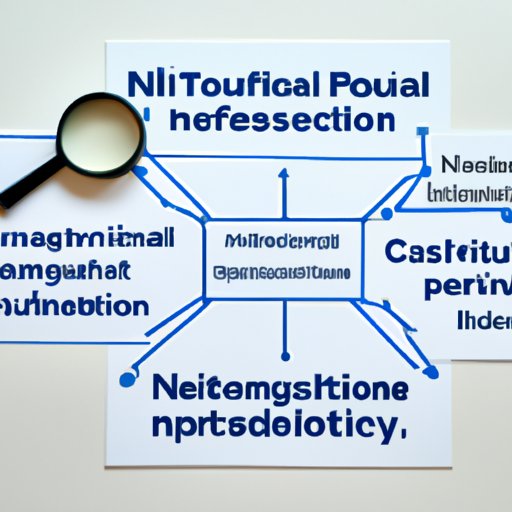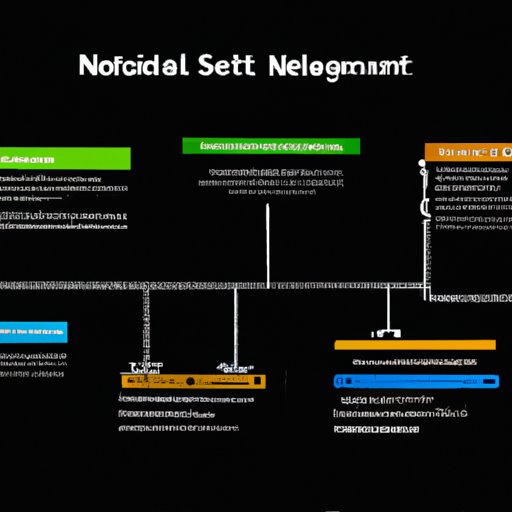Introduction
The NIST Cybersecurity Framework (NCSF) is a set of guidelines developed by the National Institute of Standards and Technology (NIST) to help organizations manage cyber risks and protect their IT assets. The framework provides a comprehensive set of best practices for organizations to assess, monitor, and respond to cybersecurity threats. It is designed to be flexible, so organizations can customize it to meet their specific needs.
Overview of Benefits
The NIST Cybersecurity Framework can provide a number of benefits to organizations. It helps them identify and prioritize critical assets, develop an organization-wide risk assessment, establish security controls, implement security measures, and monitor and respond to security breaches. Additionally, it enables organizations to better understand and manage their cyber risks, resulting in improved security posture and decreased potential for financial losses or reputational damage.

Comprehensive Guide to the NIST Cybersecurity Framework
What is the NIST Cybersecurity Framework and How Does it Protect Organizations?
The NIST Cybersecurity Framework is a voluntary set of guidelines that provide organizations with a comprehensive approach to managing cyber risks. It was developed by NIST in collaboration with industry experts and other stakeholders. The framework is based on existing standards, guidelines, and practices for managing cyber risks, and provides organizations with guidance on how to address their unique cyber risk management needs.
The NIST Cybersecurity Framework is organized around five core functions: Identify, Protect, Detect, Respond, and Recover. Each function includes a set of activities and associated outcomes that are intended to improve an organization’s security posture. By implementing the framework, organizations can reduce their overall cyber risk and better prepare themselves to respond to security incidents.
Understanding the Key Concepts and Best Practices
The NIST Cybersecurity Framework is built on the concept of “defense in depth”—the idea that an organization should have multiple layers of defense against cyber threats. This includes both technical and non-technical measures, such as employee training, policy development, and incident response plans. The framework encourages organizations to take an integrated approach to security, emphasizing the importance of processes, procedures, and technology in reducing risk.
The framework also promotes the use of best practices for managing cyber risk. These include conducting regular risk assessments, establishing security policies and procedures, developing incident response plans, and implementing appropriate security controls. Additionally, the framework encourages organizations to continuously monitor their security posture and quickly respond to any security incidents that may occur.

Exploring the Components of the NIST Cybersecurity Framework
Identifying and Prioritizing Assets
The first step in implementing the NIST Cybersecurity Framework is identifying and prioritizing assets. This includes determining which assets are most important to the organization and assessing their value and risk. Organizations should consider factors such as the availability, confidentiality, and integrity of the assets when making this determination. Once assets have been identified, organizations can then prioritize them based on their importance and risk level.
Developing an Organization-Wide Risk Assessment
Once assets have been identified and prioritized, organizations should conduct a comprehensive risk assessment to identify potential threats and vulnerabilities. This assessment should consider external threats, such as malicious actors, as well as internal threats, such as employee negligence or unauthorized access. The risk assessment should also take into account the organization’s existing security controls, procedures, and policies.
Establishing Security Controls
Once potential risks have been identified, organizations should establish security controls to mitigate them. These controls can include technical measures, such as firewalls and encryption, as well as administrative measures, such as employee training and policy development. Organizations should also consider compliance requirements when selecting security controls.
Implementing Security Measures
Once security controls have been established, organizations should implement them in accordance with their risk assessment. This includes configuring systems and devices, enforcing policies, and providing employees with the necessary training. Organizations should also ensure that their security measures are regularly tested and updated to reflect changes in the threat landscape.
Monitoring and Responding to Security Breaches
Organizations should also regularly monitor their networks and systems for signs of suspicious activity. This includes reviewing system logs, analyzing network traffic, and monitoring user activity. If a security breach is detected, organizations should have a plan in place to quickly respond and contain the incident. This plan should include steps for notifying affected parties, restoring compromised systems, and preventing similar incidents from occurring in the future.
The NIST Cybersecurity Framework: A Primer for Businesses
Understanding the Benefits of Using the NIST Cybersecurity Framework
The NIST Cybersecurity Framework can provide a number of benefits to organizations. It helps them identify and prioritize critical assets, develop an organization-wide risk assessment, establish security controls, implement security measures, and monitor and respond to security breaches. Additionally, it enables organizations to better understand and manage their cyber risks, resulting in improved security posture and decreased potential for financial losses or reputational damage.
A recent study by Forrester Research found that organizations that implemented the NIST Cybersecurity Framework experienced a 21% reduction in their overall cyber risk. In addition, the study found that organizations that used the framework were able to more quickly detect and respond to security incidents, resulting in fewer losses due to data breaches.
Choosing the Right Software and Tools
In order to effectively implement the NIST Cybersecurity Framework, organizations need to select the right software and tools. This includes tools for scanning networks and systems for vulnerabilities, monitoring user activity, and responding to security incidents. Organizations should also consider investing in security awareness training software, which can help employees recognize and avoid potential threats.
Implementing the Framework in Your Business
Organizations should develop a plan for implementing the NIST Cybersecurity Framework in their business. This plan should include steps for identifying and prioritizing assets, conducting a risk assessment, selecting security controls, implementing security measures, and monitoring and responding to security incidents. Organizations should also consider allocating resources for training and hiring personnel who are knowledgeable about cybersecurity.
Staying Up to Date with Changes in the Framework
Organizations should also stay up to date with changes in the NIST Cybersecurity Framework. As new threats emerge and technologies evolve, the framework will continue to be updated to reflect these changes. Organizations should review the framework regularly and update their security measures accordingly.
Conclusion
The NIST Cybersecurity Framework provides organizations with a comprehensive approach to managing cyber risks. It enables organizations to identify and prioritize their assets, develop an organization-wide risk assessment, establish security controls, implement security measures, and monitor and respond to security incidents. Additionally, it can help organizations reduce their overall cyber risk and better prepare themselves to respond to security incidents. For businesses looking to improve their security posture, the NIST Cybersecurity Framework is a valuable tool.
To get started with the NIST Cybersecurity Framework, organizations should first identify and prioritize their assets, conduct a comprehensive risk assessment, and select appropriate security controls. They should also invest in the right software and tools, allocate resources for training and hiring personnel, and stay up to date with changes in the framework. By following these steps, organizations can ensure that they are properly protected against cyber threats.
(Note: Is this article not meeting your expectations? Do you have knowledge or insights to share? Unlock new opportunities and expand your reach by joining our authors team. Click Registration to join us and share your expertise with our readers.)
